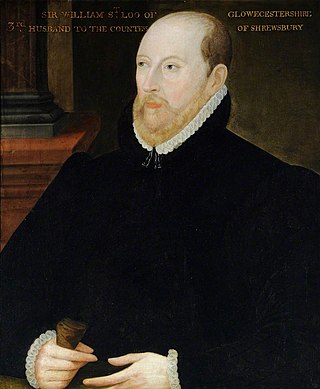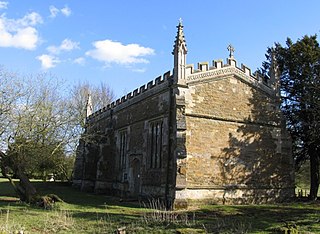
George Boleyn, Viscount Rochford was an English courtier and nobleman who played a prominent role in the politics of the early 1530s as the brother of Anne Boleyn, second wife of King Henry VIII. George was the maternal uncle of Queen Elizabeth I, although he died long before his niece ascended the throne. Following his father's promotion in the peerage in 1529 to Earl of Wiltshire and Earl of Ormond, he adopted his father's junior title Viscount Rochford as a courtesy title. He was accused of incest with his sister Anne during the period of her trial for high treason, as a result of which both were executed.

Sir Philip Hoby PC was a 16th-century English Ambassador to the Holy Roman Empire and Flanders.

Elizabeth Seymour was a younger daughter of Sir John Seymour of Wulfhall, Wiltshire and Margery Wentworth. Elizabeth and her sister Jane served in the household of Anne Boleyn, the second wife of Henry VIII. The Seymours rose to prominence after the king's attention turned to Jane. In May 1536, Anne Boleyn was accused of treason and adultery, and subsequently executed. On 30 May 1536, eleven days after Anne's execution, Henry VIII and Jane were married. Elizabeth was not included in her sister's household during her brief reign, although she would serve two of Henry VIII's later wives, Anne of Cleves and Catherine Howard. Jane died 24 October 1537, twelve days after giving birth to a healthy son, Edward VI.

Matthew Stewart, 4th Earl of Lennox was a leader of the Catholic nobility in Scotland. He was the paternal grandfather of King James VI of Scotland. He owned Temple Newsam in Yorkshire, England.

Sir Ralph Sadler or Sadleir PC, Knight banneret was an English statesman, who served Henry VIII as Privy Councillor, Secretary of State and ambassador to Scotland. Sadler went on to serve Edward VI. Having signed the device settling the crown on Jane Grey in 1553, he was obliged to retire to his estates during the reign of Mary I. Sadler was restored to royal favour during the reign of Elizabeth I, serving as a Privy Councillor and once again participating in Anglo-Scottish diplomacy. He was appointed Chancellor of the Duchy of Lancaster in May 1568.
Francis Dereham was a Tudor courtier whose involvement with Henry VIII's fifth Queen, Catherine Howard, in her youth, prior to engagement with the king, was eventually found out and led to his arrest. The information of Dereham having a relationship with Howard displeased King Henry to such great lengths he arranged the executions of all involved.
Henry Smith (1620–1668) was an English Member of Parliament and one of the regicides of King Charles I.
Gentleman Usher and Lady Usher are titles for some officers of the Royal Household of the United Kingdom. For a list of office-holders from the Restoration of the monarchy in 1660 up to the present day see List of Lady and Gentleman Ushers.

Gregory Cromwell, 1st Baron Cromwell, KB was an English nobleman. He was the only son of the Tudor statesman Thomas Cromwell, 1st Earl of Essex and Elizabeth Wyckes.
Sir John Norreys was a high ranking Lancastrian, and the head of the branch of the Norreys family who became prominent under the reign of the House of Tudor. He served as Keeper of the Wardrobe for King Henry VI of England.

Sir William Compton was a soldier and one of the most prominent courtiers during the reign of Henry VIII of England.

Sir Richard Herbert of Ewyas, Herefordshire, was a Welsh knight, gentleman, landowner, and courtier. He was an illegitimate son of William Herbert, 1st Earl of Pembroke (1423–1469), and Maud ap Howell Graunt, a daughter of Adam ap Howell Graunt (Gwynn). Richard had a full brother named George.

Withcote is a small parish currently comprising a number of scattered dwellings in Harborough, a local government district of Leicestershire. The population is included in the civil parish of Braunston-in-Rutland.
Elizabeth Chamber, better known as Elizabeth Stonor, was an English courtier. She is remembered as the wife of Sir Walter Stonor, and was one of the women chosen to serve Anne Boleyn, the king's second wife, during her imprisonment in 1536.

Sir William Coffin was a courtier at the court of King Henry VIII of England. He was a Gentleman of the Privy Chamber to King Henry VIII and Master of the Horse to Queen Jane Seymour. He was elected MP for Derbyshire in 1529.

Withcote Chapel is a redundant Anglican church in the parish of Withcote, Leicestershire, England. It is recorded in the National Heritage List for England as a designated Grade I listed building, and is under the care of the Churches Conservation Trust. Alec Clifton-Taylor includes the church in his list of 'best' English parish churches.
Dorothy Erskine, Countess of Kellie was a public figure. While married to John Pakington, a favourite of Queen Elizabeth I, she was involved in a matrimonial dispute that was heard in front of the Attorney General, Francis Bacon who was also her son-in-law.

Sir Thomas Griffin was an English landowner and hosted the royal family at Dingley.

Galyon Hone was a glazier from Bruges who worked for Henry VIII of England at Hampton Court and in other houses making stained glass windows. His work involved replacing the heraldry and ciphers of Henry VIII's wives in windows when the king remarried.

Ambrose Smith or Smythe was a London mercer in Cheapside and silkman who supplied Elizabeth I













